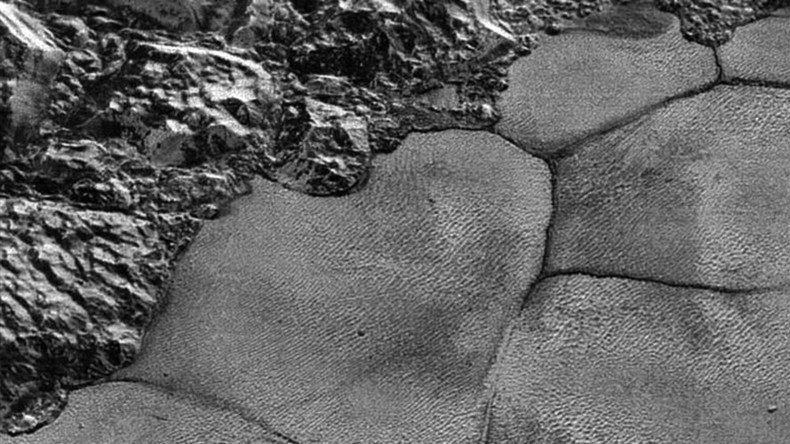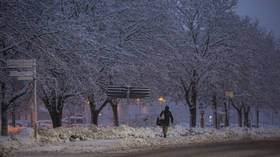Pluto space slugs? High-res NASA mosaic shows ‘lava lamp’ surface of dwarf planet

Stunning images of Pluto continue to reach Earth six months after NASA’s New Horizons completed a close-up space flyby.
The newest photo compilation shows an area 80km wide and more than 700km long. It will keep you scrolling and scrolling.
New Horizons began its reconnaissance mission in January 2006, swinging by Jupiter for a quick gravity boost before rocketing over to the Kuiper Belt moon.
It nabbed its closest shots of Pluto on July 14, 2015.
The latest mosaic of images returned to Earth on Christmas Eve, but were only recently published by NASA.
They capture interesting surface activity and provide a high resolution view of the uneven Sputnik Planum, a heart-shaped plain on Pluto split into “cells or polygons.”
Now in super high-res color! NASA shows off enhanced zoom-in pics of Pluto https://t.co/kIHEA5BtYBpic.twitter.com/yLMiLMOASV
— RT (@RT_com) December 11, 2015“Mission scientists believe the pattern of the cells stems from the slow thermal convection of the nitrogen-dominated ices that fill Sputnik Planum,” a NASA statement explained.
“A reservoir that’s likely several miles or kilometers deep in some places, the solid nitrogen is warmed at depth by Pluto’s modest internal heat, becomes buoyant and rises up in great blobs, and then cools off and sinks again to renew the cycle,” it continued. Trippy.
William McKinnon, deputy lead of the New Horizons Geology, Geophysics and Imaging Team has put the phenomenon in layman’s terms.
“This part of Pluto is acting like a lava lamp if you can imagine a lava lamp as wide as, and even deeper than, the Hudson Bay.”
Eagle-eyed space fans have speculated whether the dark objects in the photos are in fact giant alien slugs.
Space #snail pokes along on #Plutohttps://t.co/qJe0T3IQuNpic.twitter.com/be1VWBltm8
— AmericasMostHaunted (@amhaunted) January 10, 2016@PopSci Is that a sled-riding snail on the trail? #Pluto#Space
— Miss Q (@MissQSpacecat) January 8, 2016However, NASA says the objects are much more likely to be “dirty water icebergs” floating in solid nitrogen. Way to spoil the party with science, guys.
Perhaps some interesting creatures will be unearthed on the Red Planet.
READ MORE: Life on Mars ‘discovered’ by UFO fans, ‘hidden’ by NASA (PHOTOS)











